Sea change: artists make waves at the 2017 Folkestone Triennial
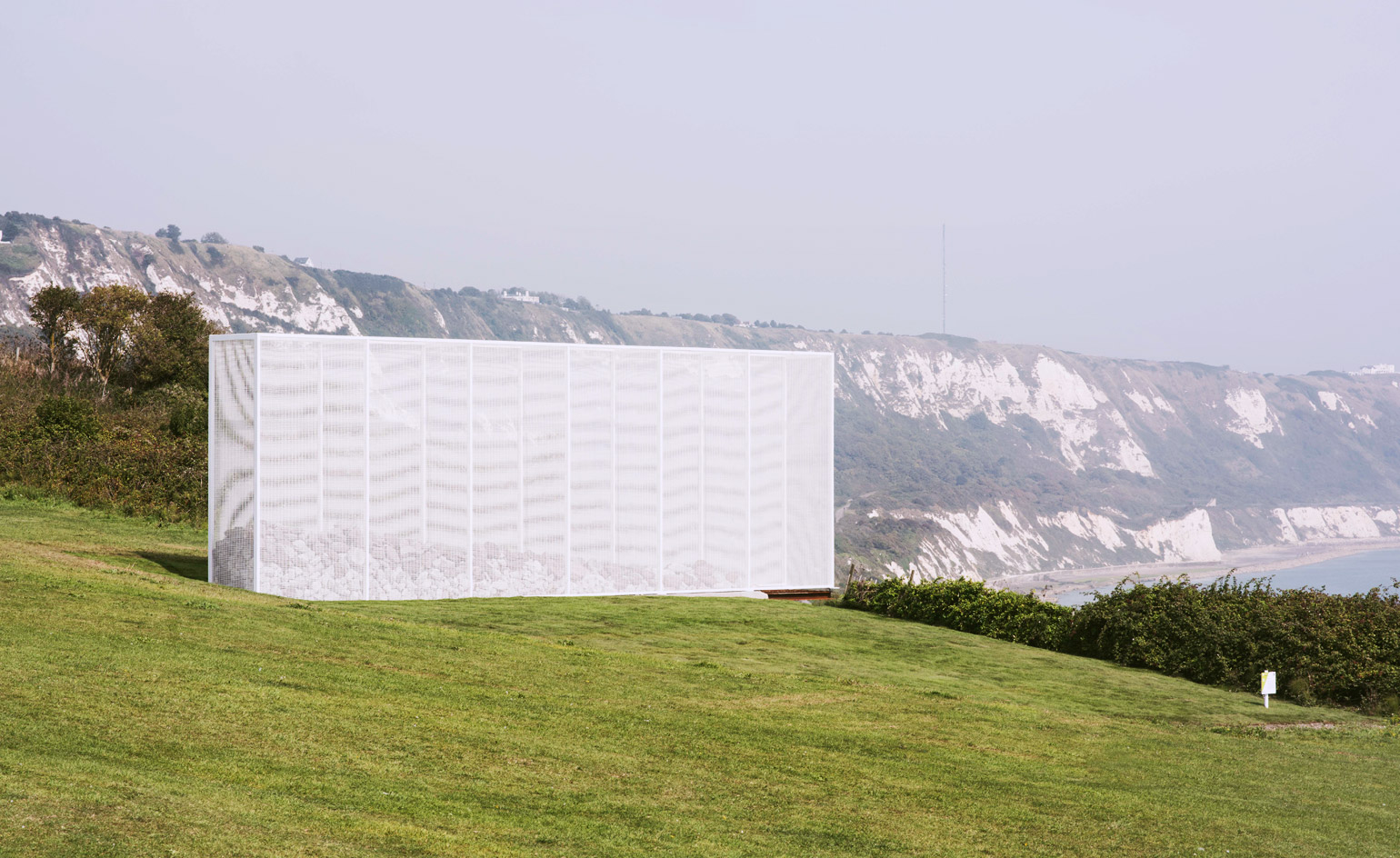
To many born and in bred in Folkestone, their hometown is becoming more and more like a little London by the sea – for better or worse. As city folk descend, house prices rise, and empty second homes stand skeletal along the shore.
With all the significant tensions that come with the Kentish gentrification, so too arrives relief, in the form of culture, learning programmes, and infrastructural development. The double-edged knife of international attention arrives too. To wit, the ever-narrowing eyes of the art world are currently trained on the fourth edition of the Folkestone Triennial.
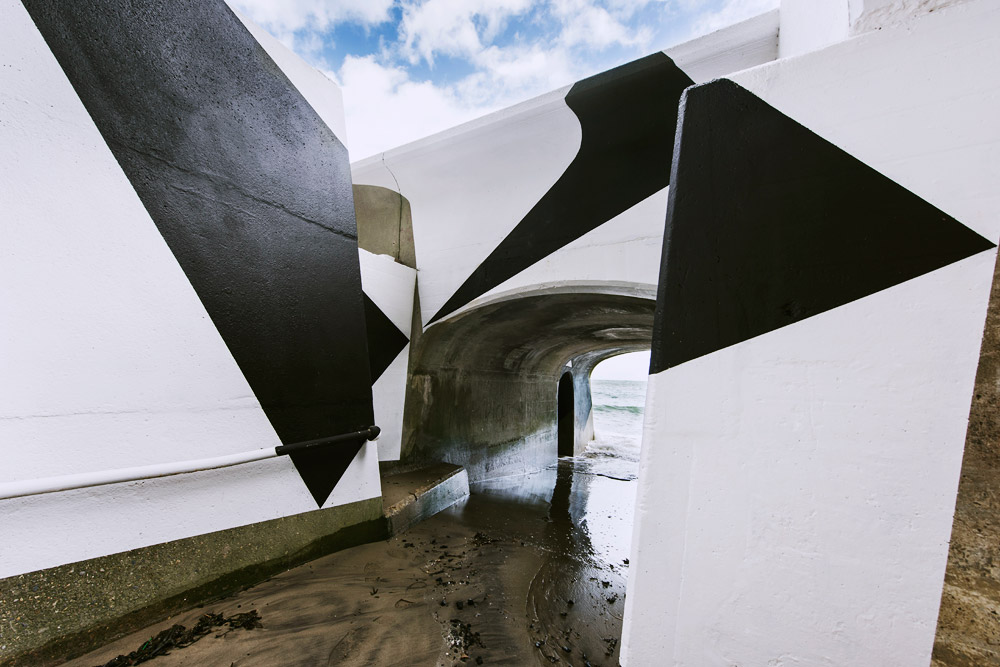
Impingement No. 66 ‘Cube Circumscribed by Tetrahedron – Tetrahedron Circumscribed by Cube’ 2017, by Gary Woodley, commissioned by the Creative Foundation for Folkestone Triennial 2017.
Comprising an eight week-long showcase of 20 pieces of newly commissioned public art, ranging from the sculptural to the conceptual, the Triennial brings considerable investment and art tourism – not to mention a bubbling mix of local excitement and raised eyebrows – to this newly desirable seaside idle.
Curator Lewis Biggs, who has been at the artistic helm of the Triennial since its last iteration in 2014, says local reaction and engagement is getting better all the time. ‘Now, when people see strange objects appearing in their landscape, they know it’s Triennial time,’ he explains. ‘Then the stories start to unfold – you hear it in the streets. The significance of the town’s artwork begins to be manufactured without us having to do anything. It’s lovely to see that.’
Standing like a call to duty, and overseeing the rest of the town atop the highest cliff face, Bob and Roberta Smith’s monumental sign declares ‘FOLKESTONE IS AN ART SCHOOL’, wrapped around an old coastal fort, and looking out to sea, like a Brexit apology to mainland Europe. It’s a mantra bannered on smaller signs throughout town, and it acts as an unofficial, but apt, tagline for the long list of art-education activities happening in town.
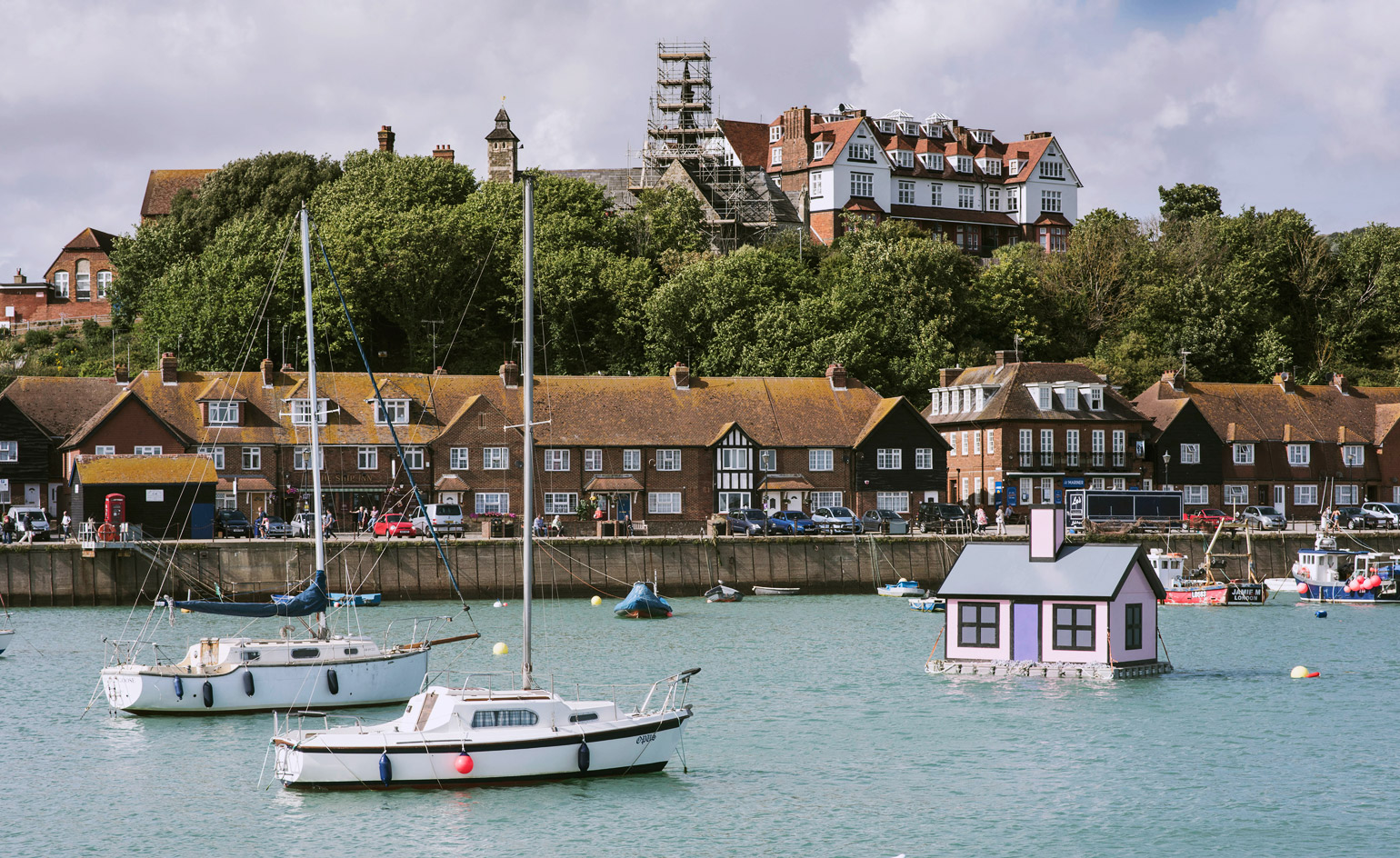
Holiday Home, by Richard Woods, commissioned by the Creative Foundation for Folkestone Triennial 2017.
Northwards, barely-there coastal trails slip up cliff edges, revealing Marc Schmitz and Dolgor Ser-Od’s giant yellow megaphone, that gathers the noise of the waves like a seashell. Further up, Hartley’s statuesque white structure, filled with Iron Age millstones dug from the next door archeological site, stands mast-like against the coastal vista. Overhanging the cliff, the stones look like they could tumble into the channel at any moment, and wash up in France. The work speaks to the (loosely employed) theme of this year’s triennial: ‘Double Edge’.
It’s a theme that nods to the fact that we are in an ‘edgy’ moment. ‘Folkestone has always been, a frontier, a border,’ Biggs explains. ‘It’s the perfect place to highlight the relationship we have with other countries – and the fact that no one country is an island.’
Some artists have adhered more closely than others. ‘Theme? What theme?’ jokes Michael Craig-Martin. ‘As soon as an artwork adheres to a theme, it loses its power.’ His colourful lightbulb mural wraps around a curving façade at the foot of The Old High Street – a glowing, optimistic gateway to the town’s Creative Quarter. Wholly supportive of reaction’s like this, Biggs was keen for the Triennial’s title to act more as a talking point, rather than a strictly followed doctrine. ‘Artists tend to perform the best when they’re given their freedom,’ he says.
As Biggs hoped, each artist has interpreted the theme with creative abandon. Richard Woods sees it as a jumping off point. ‘My work was motivated by a trip to Folkestone, but I think the issues it throws up are much broader than this single location,’ he explains. The British artist has created six colourful, cartoonish ‘Holiday Homes’ dotted in incongruous locations around town – from the beach to a mini-roundabout. The idea sprouted when a local estate agent offered Woods a leaflet selling ‘second homes by the sea’. ‘It made me think about the lack of housing stock,’ Woods says. ‘What happens to the people who sell their homes “for cash”? Where do they go? What about the people who don’t have anywhere to live in the first place?’
Probing questions like this can be read in each of the works on show. From Antony Gormley’s statue, which looks out to sea from a disused ship’s loading bay like a lost sailor; to Sol Calero’s vibrant beachfront ‘social space’, built to encourage cross-cultural experiences.
The closer you get to the works, the more cracks you see around them. The fort under Bob and Roberta Smith’s banner is crumbling. The Islamic centre under Wong Hoy Cheong’s glowing minaret installation is a tired-looking, ex-industrial building. Instead of detracting from the glamour or gravitas of the works, they add poignancy. The story of this town is still being written, and it’s future far from secure. Every three years, Folkestone is filled with more and more acts of art, steering it onwards.

Another Time XXI 2013 (Loading Bay), by Antony Gormley, commissioned by the Creative Foundation for Folkestone Triennial 2017.

The Clearing, by Studio Ben Allen, commissioned by the Creative Foundation for Folkestone Triennial 2017.

FOLKESTONE IS AN ART SCHOOL, by Bob and Roberta Smith, commissioned by the Creative Foundation for Folkestone Triennial 2017

Casa Anacaona, by Sol Calero, commissioned by the Creative Foundation for Folkestone Triennial 2017.
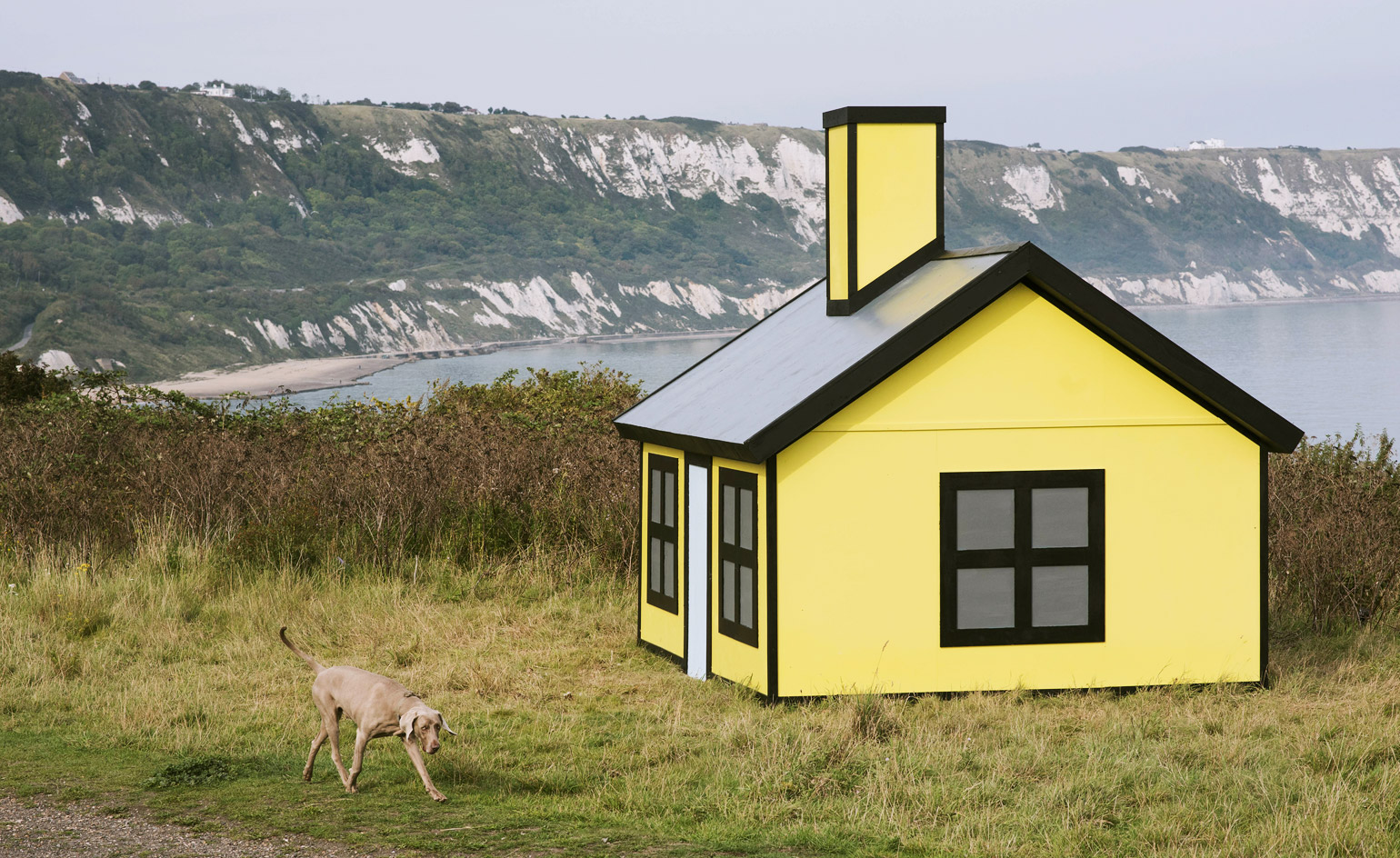
Holiday Home, by Richard Woods, commissioned by the Creative Foundation for Folkestone Triennial 2017.

Siren, Marc Schmitz and Dolgor Ser-Od, commissioned by the Creative Foundation for Folkestone Triennial 2017.
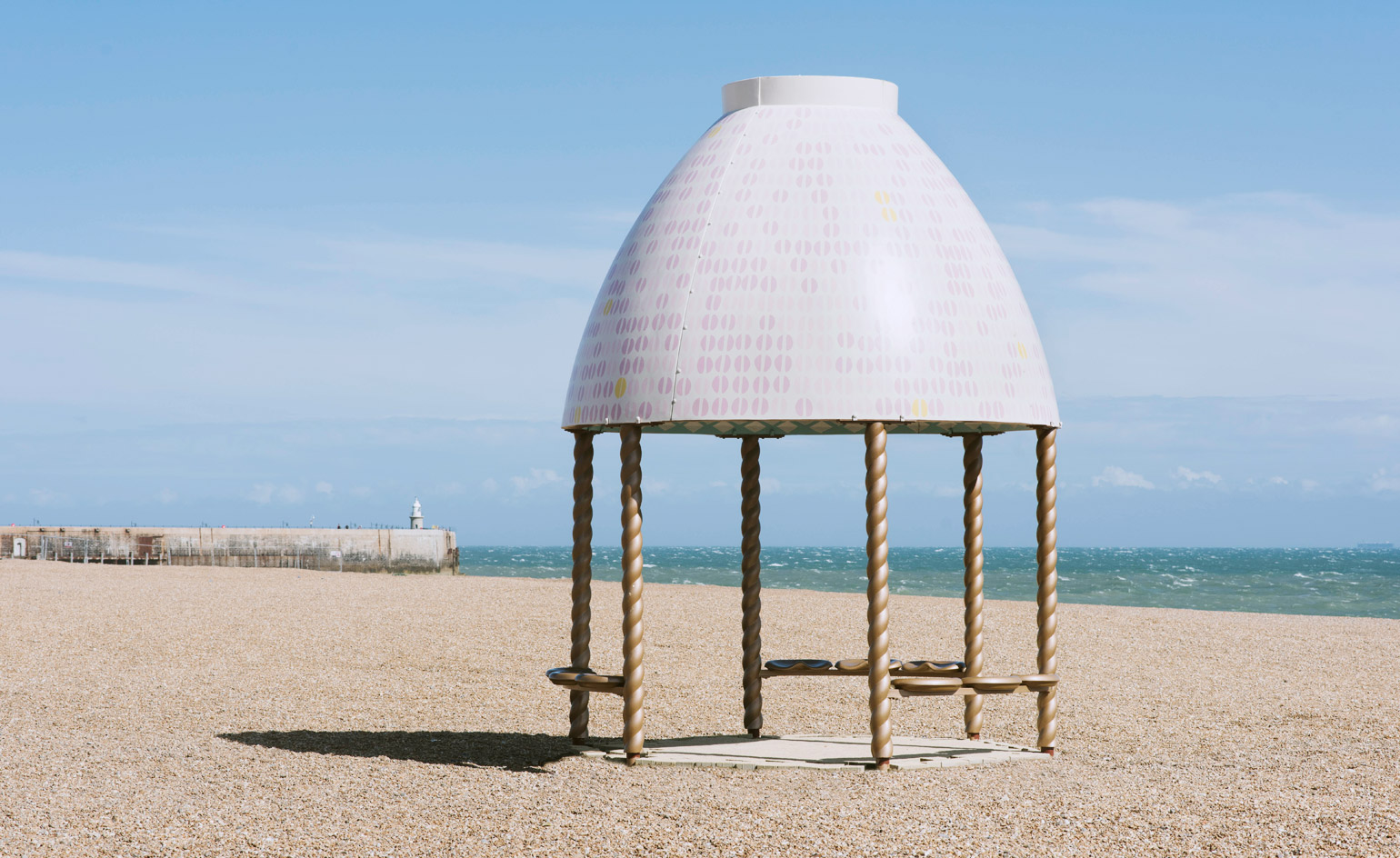
Jelly Mould Pavilion, by Lubaina Himid, commissioned by the Creative Foundation for Folkestone Triennial 2017.

Lamp Post (as remembered), by David Shrigley, commissioned by the Creative Foundation for Folkestone Triennial 2017.

Folke Stone Power Plant, by Nomeda and Gediminas Urbonas, commissioned by the Creative Foundation for Folkestone Triennial 2017
INFORMATION
The Folkestone Triennial continues until 5 November. For more information, visit the website
ADDRESS
Receive our daily digest of inspiration, escapism and design stories from around the world direct to your inbox.
Various locations
Folkestone
Kent CT20
Elly Parsons is the Digital Editor of Wallpaper*, where she oversees Wallpaper.com and its social platforms. She has been with the brand since 2015 in various roles, spending time as digital writer – specialising in art, technology and contemporary culture – and as deputy digital editor. She was shortlisted for a PPA Award in 2017, has written extensively for many publications, and has contributed to three books. She is a guest lecturer in digital journalism at Goldsmiths University, London, where she also holds a masters degree in creative writing. Now, her main areas of expertise include content strategy, audience engagement, and social media.
-
 A compact Scottish home is a 'sunny place,' nestled into its thriving orchard setting
A compact Scottish home is a 'sunny place,' nestled into its thriving orchard settingGrianan (Gaelic for 'sunny place') is a single-storey Scottish home by Cameron Webster Architects set in rural Stirlingshire
-
 7 colours that will define 2026, from rich gold to glacier blue
7 colours that will define 2026, from rich gold to glacier blueThese moody hues, versatile neutrals and vivid shades will shape the new year, according to trend forecasters
-
 In Norway, discover 1000 years of Queer expression in Islamic Art
In Norway, discover 1000 years of Queer expression in Islamic Art'Deviant Ornaments' at the National Museum of Norway examines the far-reaching history of Queer art
-
 Pantone’s new public art installation is a tribute to Coldplay’s ‘Yellow’, 25 years after its release
Pantone’s new public art installation is a tribute to Coldplay’s ‘Yellow’, 25 years after its releaseThe colour company has created a – you guessed it – yellow colour swatch on some steps in Wembley Park, London, where the band will play ten shows this month
-
 Out of office: the Wallpaper* editors’ picks of the week
Out of office: the Wallpaper* editors’ picks of the weekSummer holidays are here, with Wallpaper* editors jetting off to some exceptional destinations, including highly recommended Mérida in Mexico. Then it’s back to work, or, for one editor, back to school…
-
 Rolf Sachs’ largest exhibition to date, ‘Be-rühren’, is a playful study of touch
Rolf Sachs’ largest exhibition to date, ‘Be-rühren’, is a playful study of touchA collection of over 150 of Rolf Sachs’ works speaks to his preoccupation with transforming everyday objects to create art that is sensory – both emotionally and physically
-
 Architect Erin Besler is reframing the American tradition of barn raising
Architect Erin Besler is reframing the American tradition of barn raisingAt Art Omi sculpture and architecture park, NY, Besler turns barn raising into an inclusive project that challenges conventional notions of architecture
-
 What is recycling good for, asks Mika Rottenberg at Hauser & Wirth Menorca
What is recycling good for, asks Mika Rottenberg at Hauser & Wirth MenorcaUS-based artist Mika Rottenberg rethinks the possibilities of rubbish in a colourful exhibition, spanning films, drawings and eerily anthropomorphic lamps
-
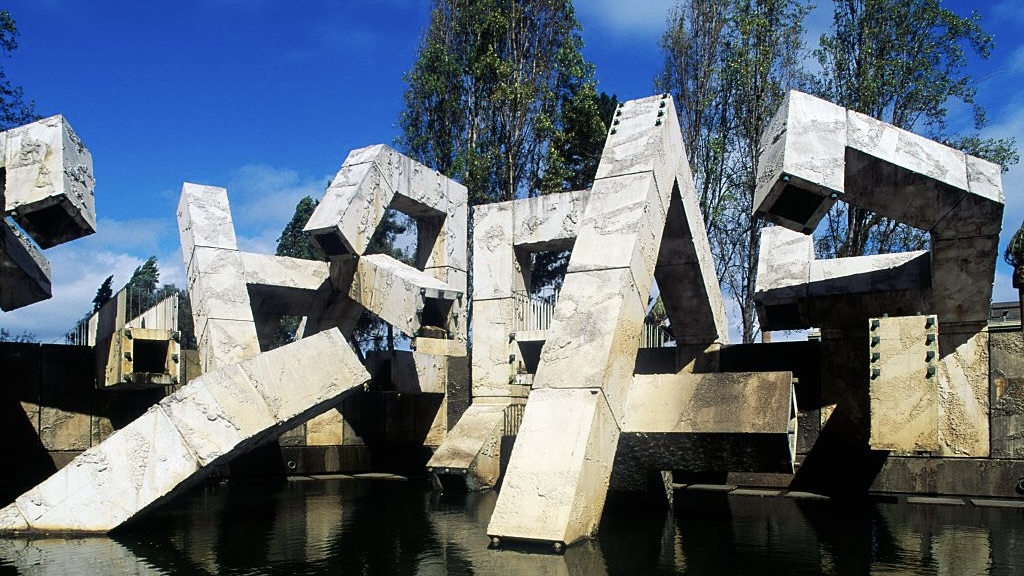 San Francisco’s controversial monument, the Vaillancourt Fountain, could be facing demolition
San Francisco’s controversial monument, the Vaillancourt Fountain, could be facing demolitionThe brutalist fountain is conspicuously absent from renders showing a redeveloped Embarcadero Plaza and people are unhappy about it, including the structure’s 95-year-old designer
-
 See the fruits of Niki de Saint Phalle and Jean Tinguely's creative and romantic union at Hauser & Wirth Somerset
See the fruits of Niki de Saint Phalle and Jean Tinguely's creative and romantic union at Hauser & Wirth SomersetAn intimate exhibition at Hauser & Wirth Somerset explores three decades of a creative partnership
-
 Technology, art and sculptures of fog: LUMA Arles kicks off the 2025/26 season
Technology, art and sculptures of fog: LUMA Arles kicks off the 2025/26 seasonThree different exhibitions at LUMA Arles, in France, delve into history in a celebration of all mediums; Amy Serafin went to explore